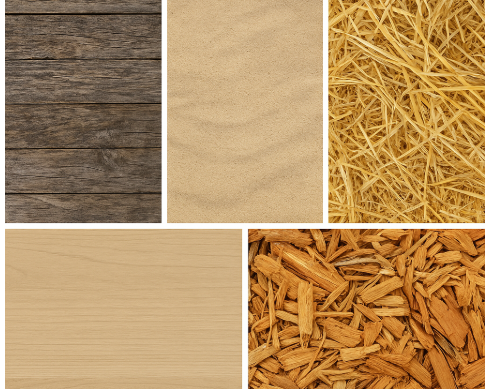Choosing the right flooring for your chicken coop might not seem like a big deal—until you’re knee-deep in bedding that won’t stay clean or dealing with a mite infestation in the cracks. The right coop floor isn’t just about comfort or aesthetics—it’s about biosecurity, sanitation, and the health of your flock.

Let’s break down the best flooring options for your coop and which one might be right for you.
1. Concrete Flooring – The Gold Standard for Biosecurity
If you’re looking for the easiest-to-clean, most rodent-proof option, concrete is king.
Pros:
- Super easy to clean and disinfect
- Impervious to digging predators and rodents
- Doesn’t rot or absorb moisture
- Great base for deep litter method or layered bedding
Cons:
- Can be cold in winter without bedding
- Higher upfront cost to pour a slab
Tip: Slope it slightly so water drains away when washing it down.
2. Wood Flooring – Common but Requires Maintenance
Many pre-built coops come with wood floors. It’s a decent option, but it has to be managed well.
Pros:
- Affordable and easy to build
- Comfortable underfoot for chickens
- Works well with bedding
Cons:
- Can absorb moisture and odors
- Mites can hide in cracks and seams
- Prone to rot if not sealed
Upgrade Idea: Use a coat of non-toxic sealant or install vinyl flooring over the wood to make cleaning easier.
3. Dirt Flooring – Natural but Risky
Using bare earth as flooring is tempting—it’s free and looks “natural.” But it’s also the least hygienic.
Pros:
- Free if you’re building a ground-level coop
- Allows natural scratching and dust bathing
Cons:
- Difficult to clean thoroughly
- Invites rodents, mites, and predators
- Absorbs moisture, leading to odor and bacteria
If you go this route, consider installing a layer of hardware cloth under the coop to prevent digging and pests.
4. Vinyl Flooring – A Clean Coop Keeper’s Dream
Vinyl isn’t a standalone floor, but it’s a fantastic covering for wood or plywood floors.
Pros:
- Waterproof and easy to sanitize
- Inexpensive and simple to install
- Mite- and moisture-resistant
Cons:
- Can tear over time if scratched by claws or heavy equipment
- Must be sealed at edges to prevent debris from slipping under
Use a sheet version, not tiles, to avoid gaps where bugs can hide.
Conclusion
If you’re prioritizing biosecurity, cleaning ease, and long-term flock health, here’s the ranking:
- Concrete + bedding
- Wood + vinyl cover
- Well-maintained sealed wood
- Dirt (only if managed with pest barriers and bedding)
The right floor depends on your budget, your climate, and how often you’re willing to clean. But whatever you choose, remember: a clean floor is a healthy flock—and it makes your job a whole lot easier.
